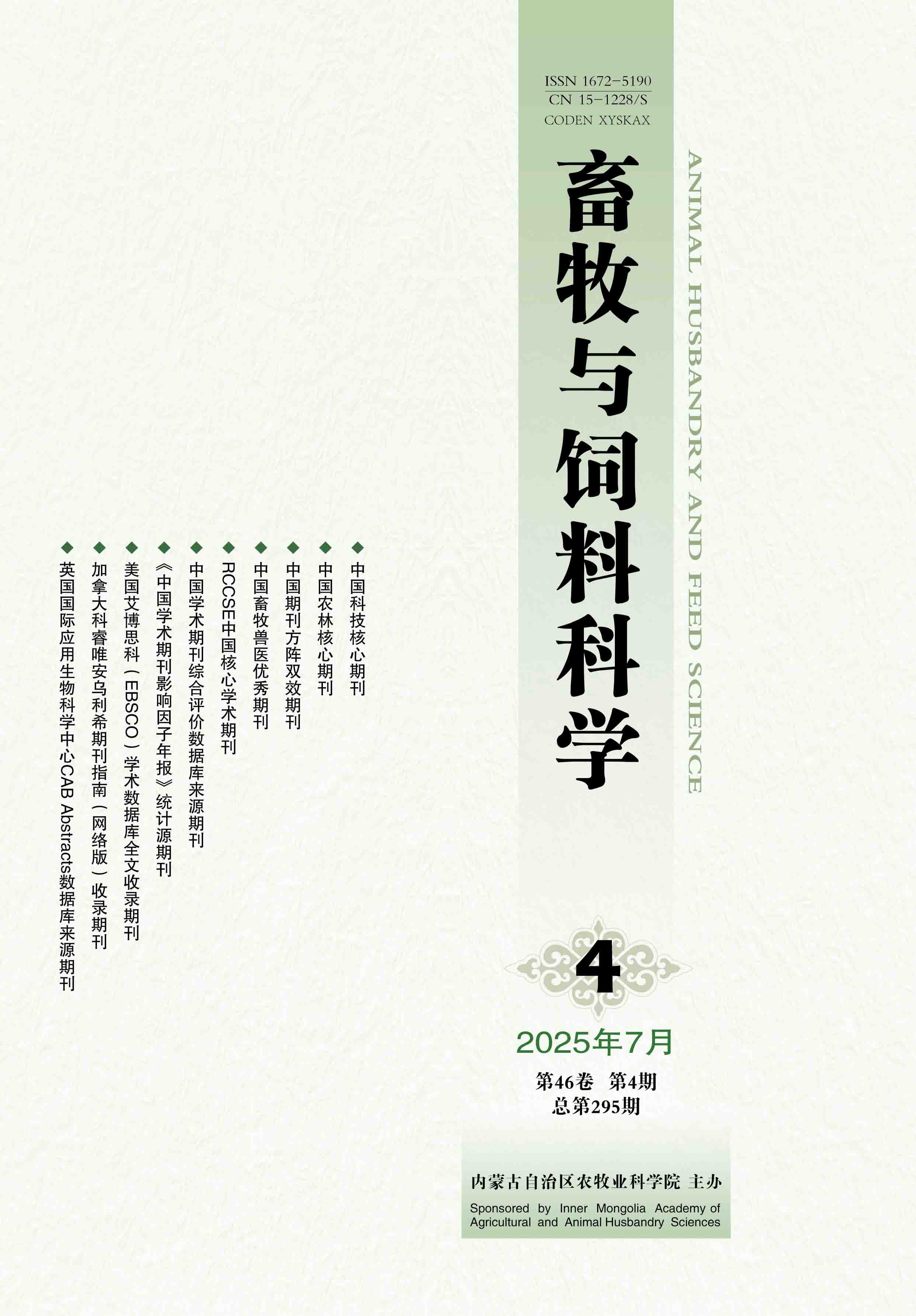Select
Expression of GLUD 1 Gene in Animal Tissues and Structural Analysis of GDH Protein
XU Hong-yang, XU Jing, FANG Jun, DE Bao-jun, ZHOU Huan-min
2021, 42(4):
7-12.
doi:10.12160/j.issn.1672-5190.2021.04.002
Abstract
(
426 )
PDF (12160KB)
(
29
)
Save
References |
Related Articles |
Metrics
[Objective]To characterize the expressions of GLUD 1 gene in different tissues of animals, to compare the structural differences of GDH protein in different species, and to clarify the expression mode of GLUD 1 gene and biological function of GDH protein. [Method] Five tissue samples, including liver, kidney, skin, fat and muscle, were collected respectively from rat, sheep and sika deer for detecting the relative expression of GLUD 1 gene by qRT-PCR using β -actin as reference gene. The differential expression of GLUD 1 gene in various tissues was characterized by non-repetitive two-factor analysis. The amino acid sequences of GDH proteins from 7 species including human, mouse, rat, goat, sheep, cattle and pig were compared, and the three-dimensional structure of GDH proteins from different species was simulated. [Result] The expression of GLUD 1 gene was observed in the five tested tissues of rat, sheep and sika deer, and higher expression level was found in liver for all of the three kinds of animals. The expression level of GLUD 1 gene in liver of rat and sika deer was extremely significantly (P <0.01) higher than that of sheep, and the expression level of GLUD 1 gene in kidney of rat was extremely significantly (P <0.01) higher than that of sika deer. The amino acid sequence of human GDH protein had high similarities to that of pig, cattle, goat and sheep, while the amino acid sequence similarity of GDH protein between rat and mouse reached up to 99.10 %. Rat, human and pig had 2 (position 8 and 40 from Ala to Val), 1 (position 23 from Ala to Ser), and 2 (position 33 and 39 from Ala to Thr) species-specific mutations in amino acid sequence of GDH protein, respectively. The GDH proteins of mouse, rat and human were predicted as trimer structure, and those of goat, sheep, cattle and pig were predicted as homologous hexamer structure. [Conclusion] The GLUD 1 gene has differential expression in various tissues of rat, sheep and sika deer, and exhibits a higher level of expression in liver. While the amino acid sequence similarity of GDH proteins among different species is high, there are still sequence differences, especially the corresponding species-specific amino acid mutation sites.








